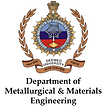JIGAR PATADIYA
PhD Student
Ph.D. CANDIDATE AT DEAKIN UNIVERSITY, AUSTRALIA AND
DIAT - PUNE (DEAKIN INDIA RESEARCH INNOVATION).
STUDENT ID: 222013634
RESEARCH TITLE: “COMPOSITES OF SHAPE MEMORY POLYMERS FOR ENERGY
ABSORBING APPLICATION: DESIGN AND FABRICATION”.
Google Scholar Profile: https://scholar.google.com/citations?user=A7bOo8gAAAAJ&hl=en&oi=ao
LinkedIn Profile: https://www.linkedin.com/in/jigar-patadiya-144939147/
ORCID - https://orcid.org/0000-0001-7987-156X
RESEARCH DOMAINS
3D/4D printing,
Polymer composite,
Biomimetic,
Energy absorbing,
Structural applications.
PUBLISHED PAPERS:
Jigar Patdiya, Balasubramanian Kandasubramanian, Fused Deposition Modeling (FDM) and Nano-Fillers Impact on Shape Memory Properties of 3D Printed Thermoplastic Polyurethane (TPU) Filament, Smart 3D Nano printing, CRC Press, 299-322, 2022, eBookISBN - 9781003189404.

ABSTRACT - Nature's diversification has been inspiring the world's creative minds to replicate its convoluted structure. However, since the 1980s, 3D printing has challenged conventional processing with material, design, and cost efficiencies. 3D printing incorporation with stimuli-responsive materials generates a window to fabricate dynamic structure to alter its printed shape when actuated. The present work has employed nano additives' effect on shape memory performance of 3D printing shape memory polyurethane (SMPU) filament and printing process impact on SMPU filament. Reinforcement materials such as MWCNT, nanoclay, activated charcoal, and polypyrrole were compounded and extruded in 2 wt.% with SMPU, and the output of which was utilized for characterization like FTIR and TGA, and shape memory testing was performed. Extrudate filament fed to spring-force assembly, specially designed and fabricated, and shape transition values were determined using the involute curve profile. The results testified shape recovery > 90% for neat SMPU, as well as SMPU composites 3D printed filaments. Considering to shape fixity, only pure polyurethane and nano clay composite stood > 80%, whereas another composite deteriorated to 70% because of soft segment interaction. The experiment was carried forward to analyze the additive manufacturing impact on shape memory performance of SMPU. 3D printed filaments and printed structure both serve a vital range of application in biomedical, soft robotics, aeronautical industries, electronics, and numerous others
2. Jigar Patadiya, Ganesh Gawande, Balasubramanian K., A review on polybenzimidazoles blends and nanocomposites for engineering applications, Polymer-Plastic Technology and Materials,1-28, 2022.
DOI - https://doi.org/10.1080/25740881.2022.2069036.

ABSTRACT -Polybenzimidazole (PBI) is an energy-efficient specialty thermoplastic majorly known for its performance at high temperatures along with mechanical stability. The chemical structure of the material allows it to frame typical compatible blends with poly(aryl ether ketone) (PAEK) while immiscible blend with some of the poly(aryl ether sulfone) though exhibiting high properties. The material displays its composite formation with some well-known nanocomposite materials like carbon nanofillers, graphene, etc. This disquisition focuses on PBI material modifications in the forms of blends of nanocomposites and showcases materials potential to be used in applications in aerospace, separation processes, electrochemical fuel cell, and protective coating.
3. Jigar Patadiya, Balasubramanian K., Progress in 4D printing of stimuli responsive materials, Polymer-Plastic Technology and Materials, 2021, Vol. 60, Issue 17, 1-40.
DOI - https://doi.org/10.1080/25740881.2021.1934016.

ABSTRACT – Smart materials are capable of sensing, memorizing, and changing their structure. Fabrication of smart materials established a modern-day technology called additive manufacturing (AM). However, non-uniform shrinkage, anisotropic behavior, and the 3D printing technique’s static nature gave way to 4D printing with an additional 4th coordinate as a time for the dynamic design structures. This review article converges the progression, inclusions of intelligent materials, significant stimulus, multiple parameters, modeling of SMMs, filler interaction in SMCs, additive manufacturing processes applied for 4D printing, characterization techniques, and region of demand of 4D printing, as well as challenges and future scope in 4D printing.
4. Jigar Patadiya, Adwait Gawande, Ganpati Joshi, Balasubramanian K., Additive manufacturing of shape memory polymer composites for futuristic technology, Industrial & Engineering Chemistry, 2021, 60, 44, 15885–15912.
DOI - https://doi.org/10.1021/acs.iecr.1c03083

ABSTRACT -Development in device, structure, design, and space component mechanisms is essential for performance and cost. Direct human interaction and monitoring are complicated in the aeronautical and space industry for morphing the structure-like winglet movement according to environmental change, which currently takes place by electromechanical sensing and response. This kind of system demands timely maintenance and control. Alteration of this bulkiness is provided by a viable technology called 4D printing, which incorporates the interdisciplinary study of three-dimensional printing, intelligent materials, stimulus, and design. In contrast to static-natured additive manufactured or 3D printed structures, four-dimensional (4D) printing enables transformation in objects under application of the correct environmental command like temperature, ohmic energy, water, light, magnetic energy, and much more. The insight of 4D printing is due to focus-researched intelligent materials such as shape memory polymers (SMP), shape memory alloys (SMA), and their composites. Shape memory polymer composites (SMPC) are an emerging class of insolent structural substances that can be inelastically abnormal and regain its standard shape by an external environmental change which serves in demanding applications like medical, origami, sensors, and robotics, and in aerospace structures such as solar arrays, deployable panels, cells, booms, self-deployable structures, reflector antennas, and more. Herein, this review amalgamates progress of four-dimensional printing with a combination of 3D printing, shape memory polymers, additive effect on its structural as well as shape-memorizing qualities, SMPC, composite fabrication methods, actuation medium, mechanism, and focus on SMPC in future applications with natural stimuli like solar energy, light, vibration, water, and more in self-actuation robots, wearable electronics, satellite hinges, in whole, aero-mechanical sectors, soft robotics industries, innovative electronics areas, defense sectors, and so on.
Experimental Study on Shape Memory Behaviour of Thermo Plastic Polyurethane

